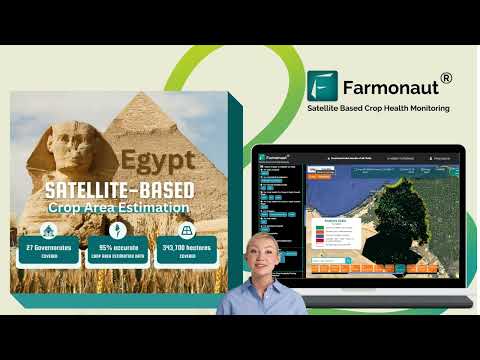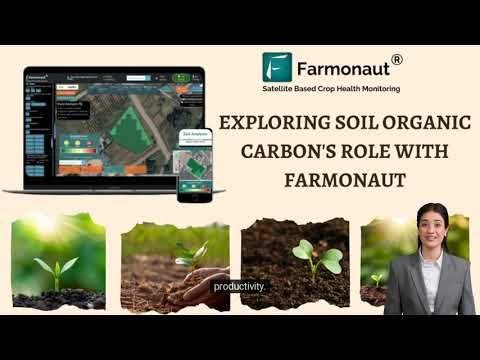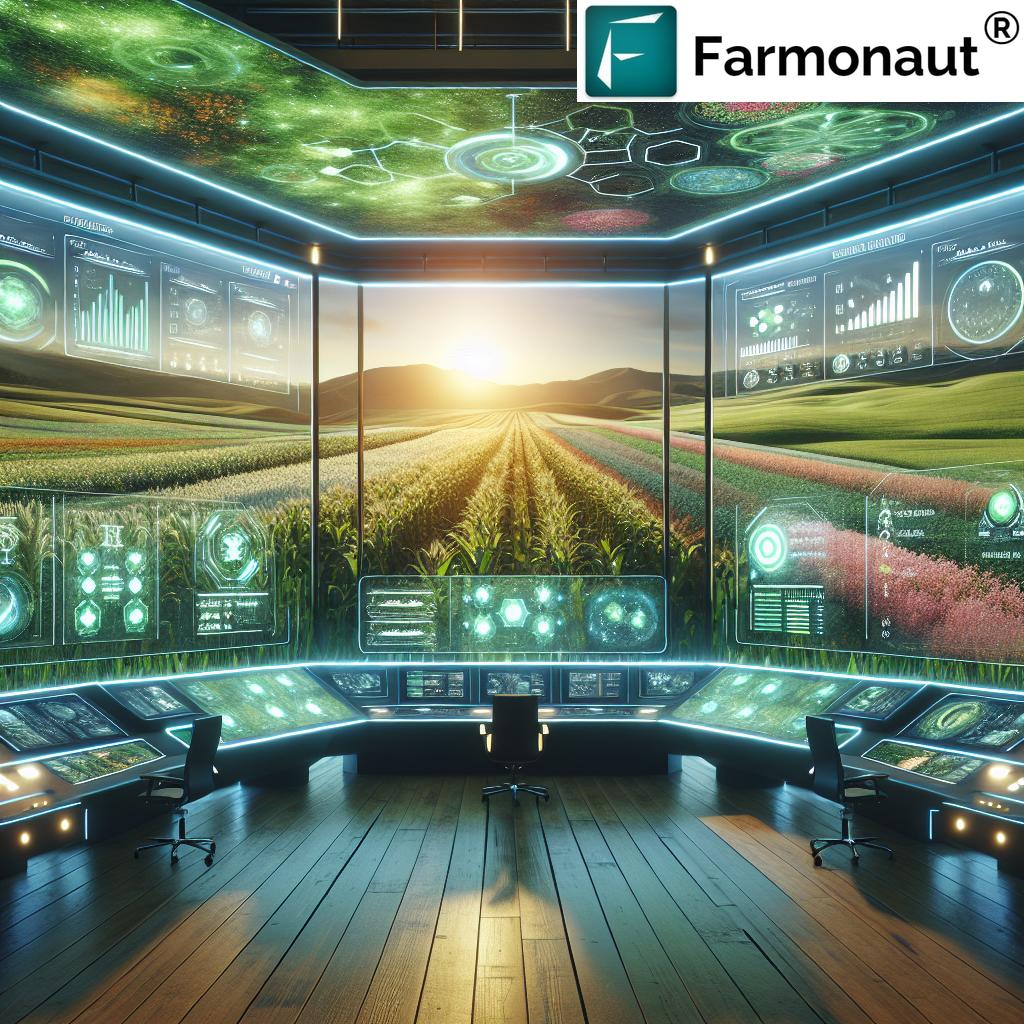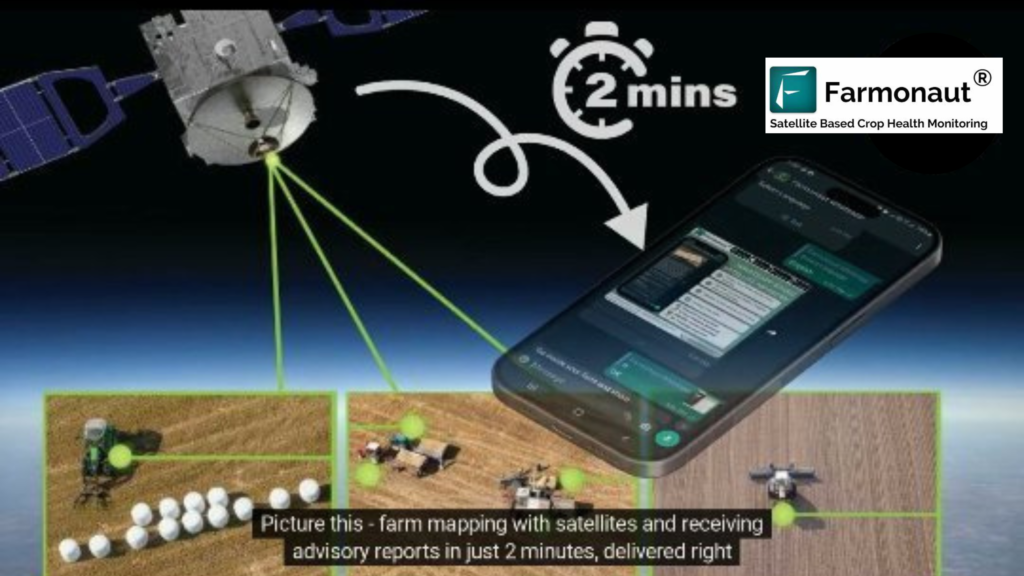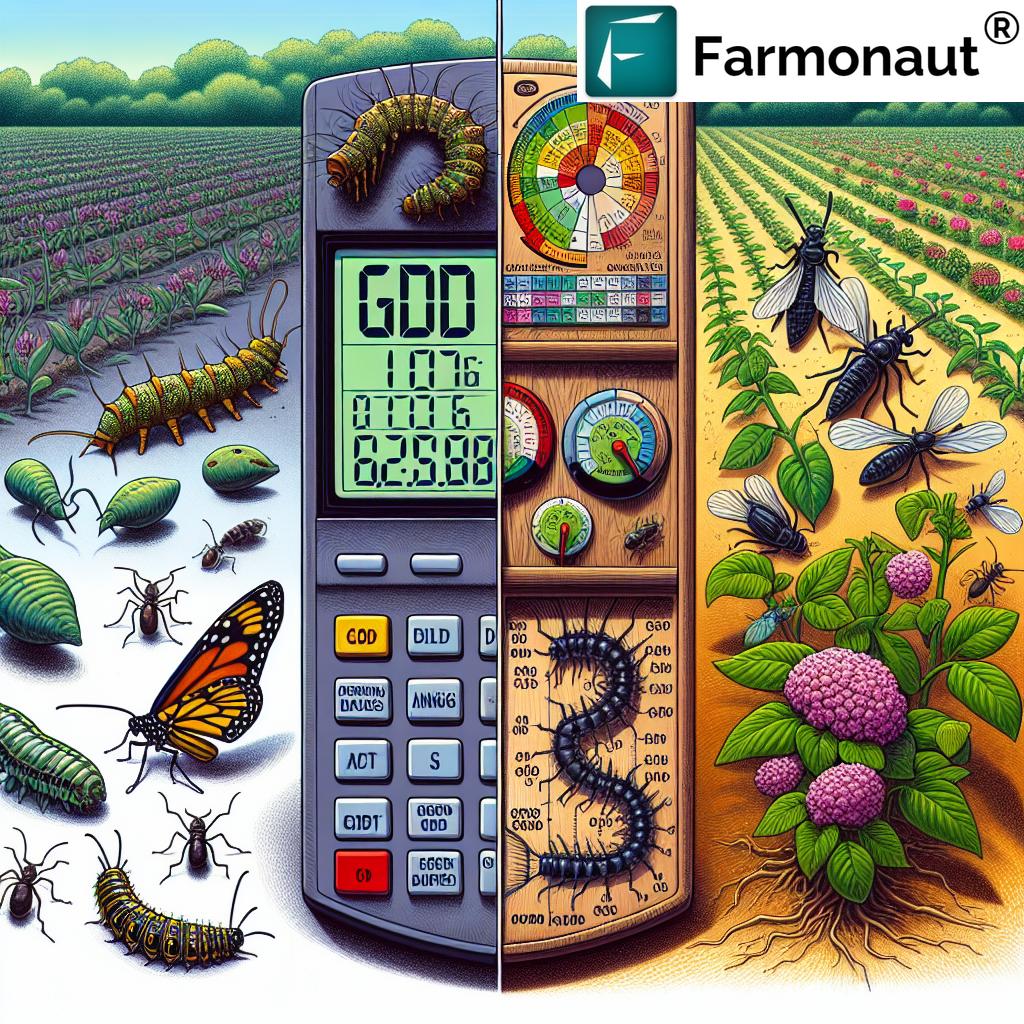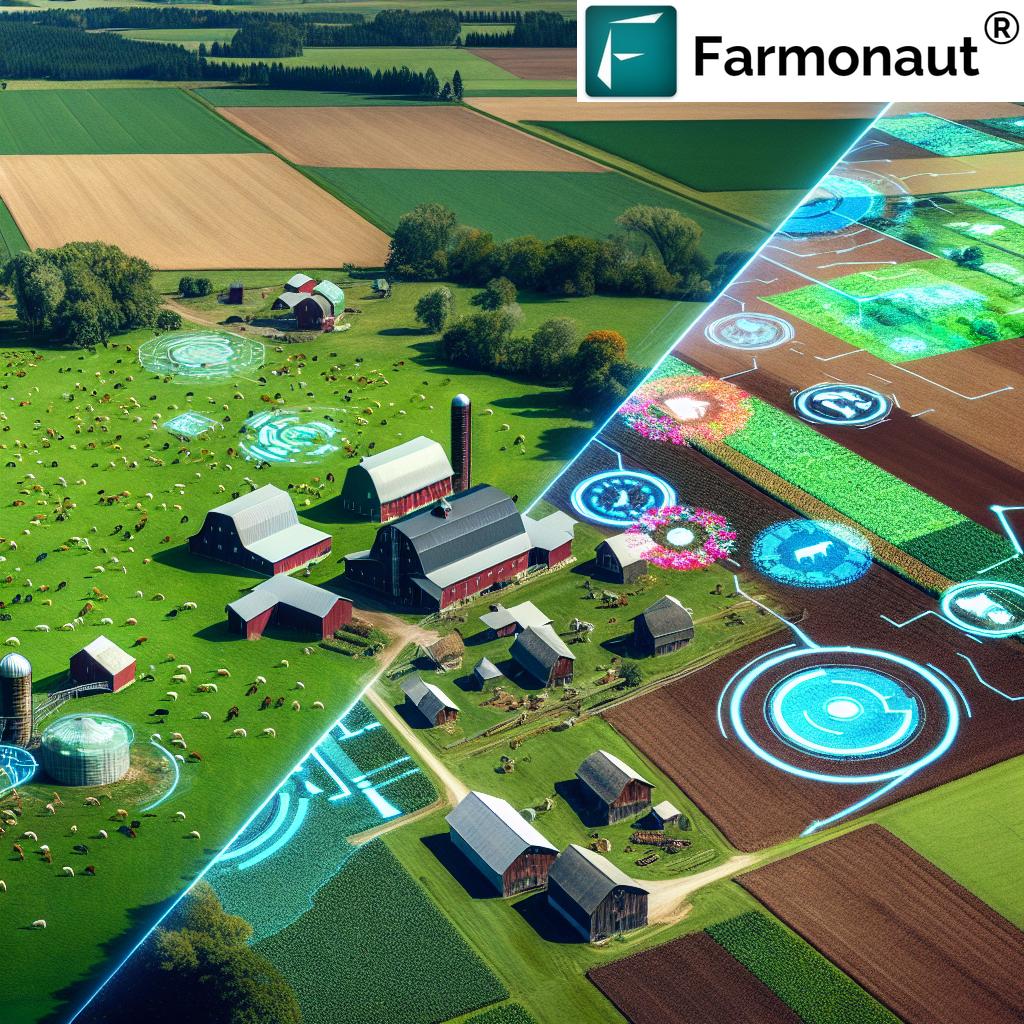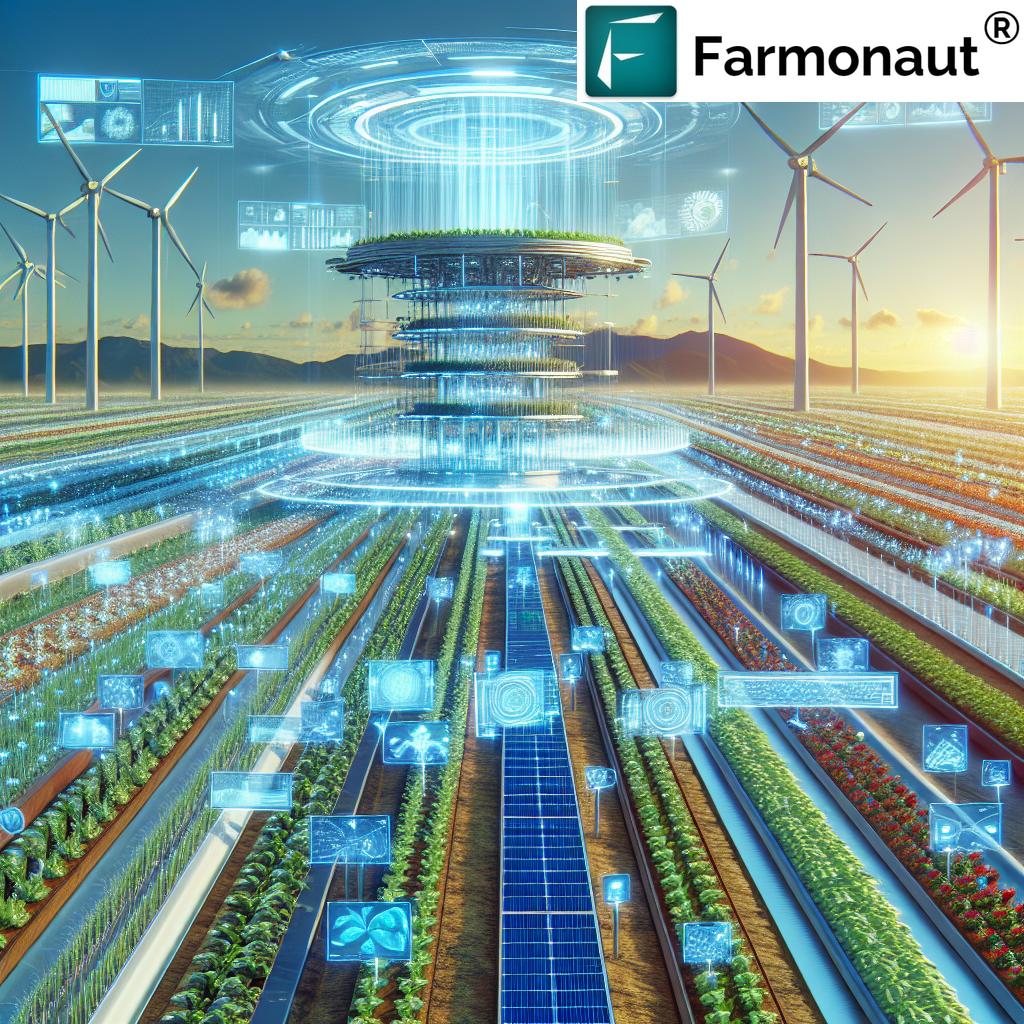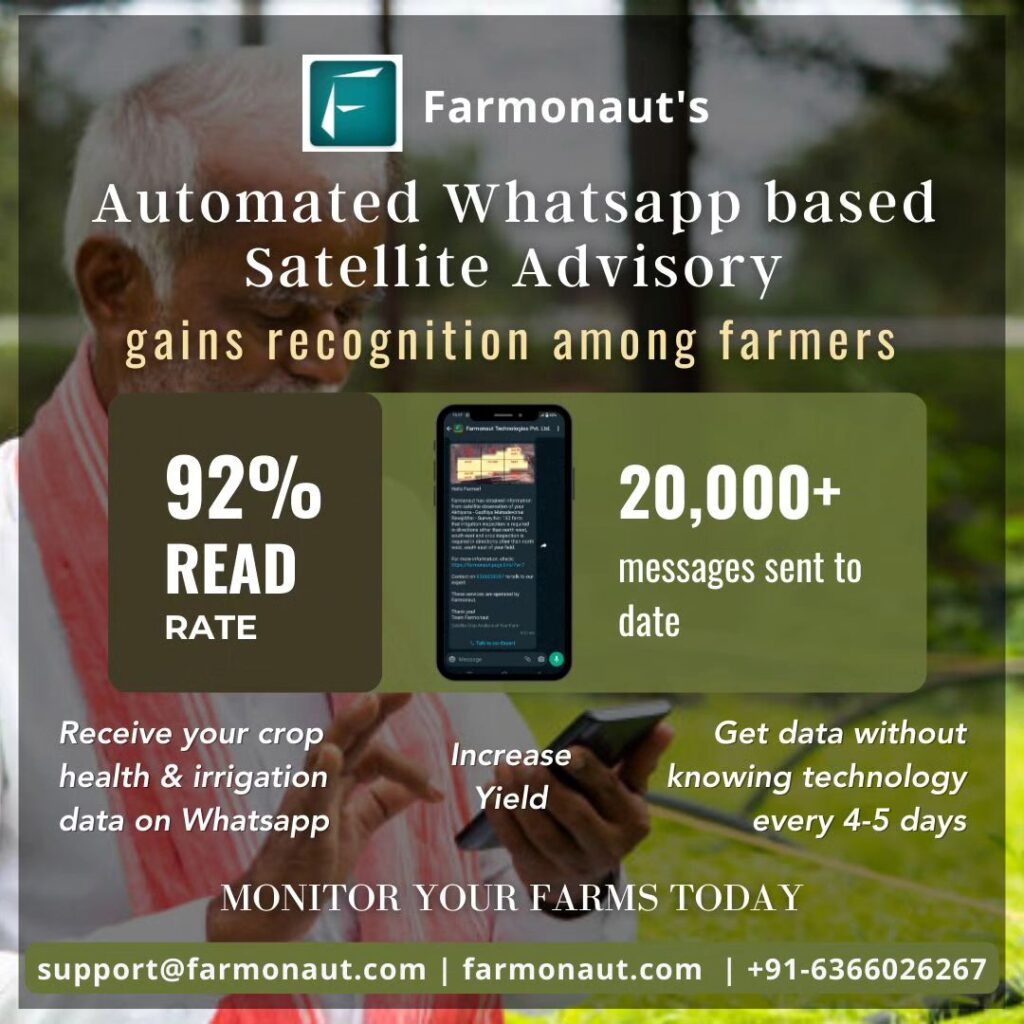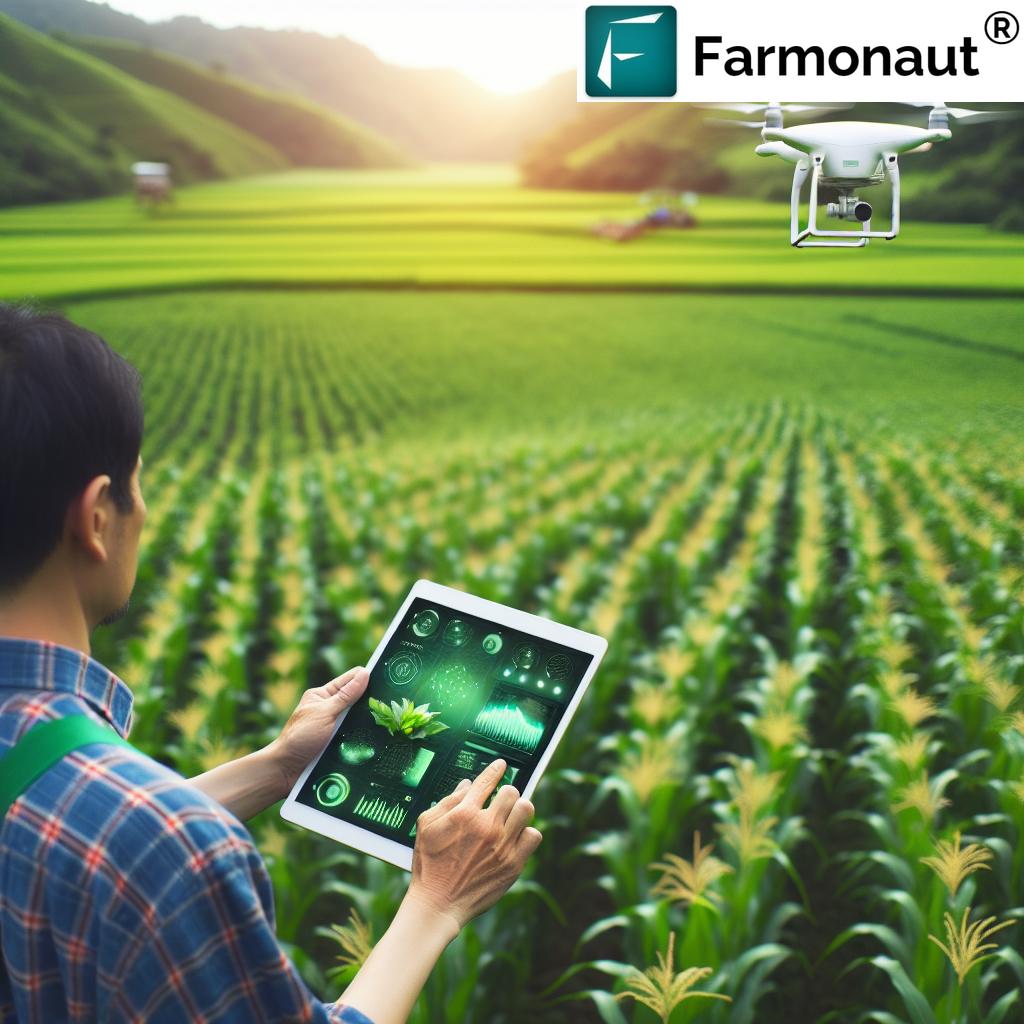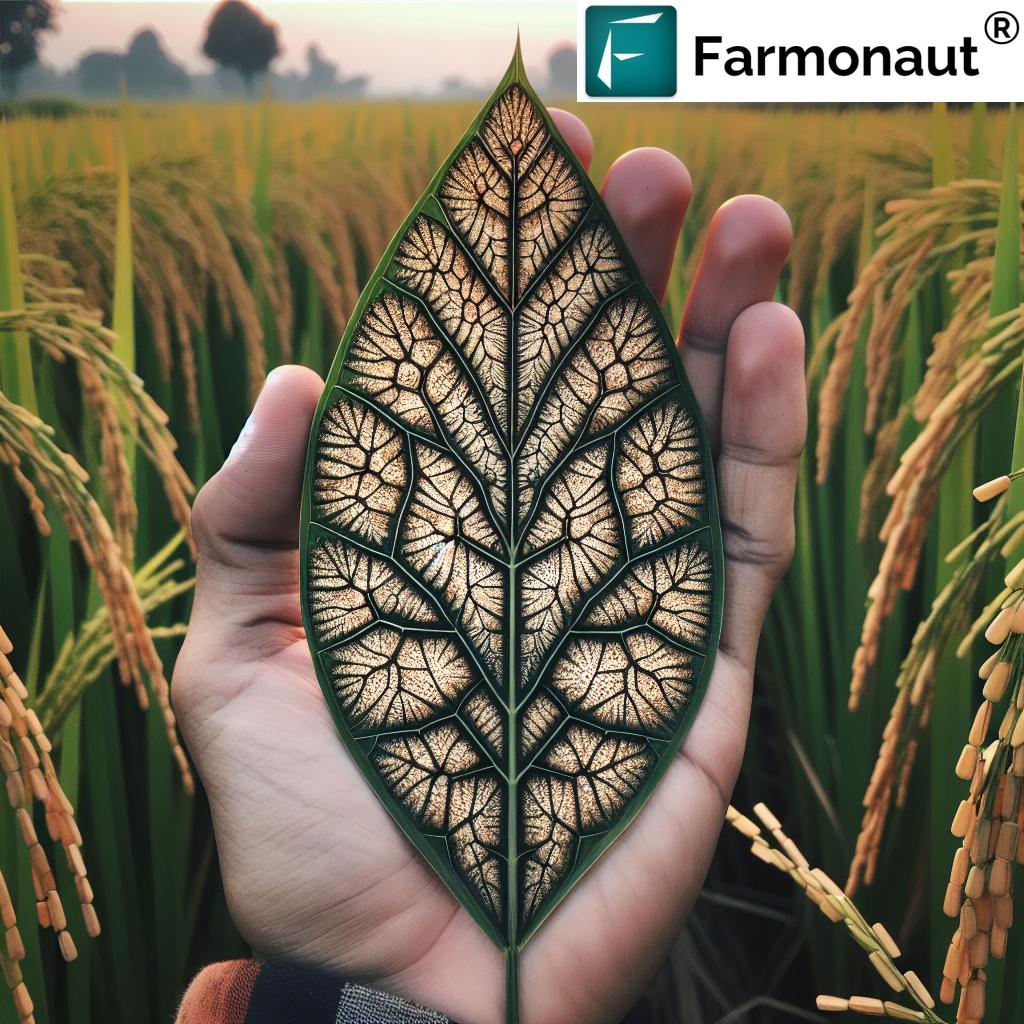Agricultural Innovation: 7 Mind-Blowing Techs Revealed
Introduction: The Era of Agricultural Innovation
We stand at a pivotal junction in the evolution of agriculture. With the world’s population steadily rising, climate patterns shifting, and resource scarcity intensifying, it is innovation that has become our strongest ally in ensuring food security and environmental health. The age of traditional, intuition-based farming is quickly being replaced by technology-driven, analytics-enhanced systems designed to optimize productivity, enhance sustainability, and improve resilience.
Agricultural innovation refers to the advancement and application of technologies, practices, and systems that dramatically boost productivity, mitigate environmental impact, and empower farmers worldwide. As the challenges in forestry, crop farming, and rural economies increase, these innovations do not just offer hope — they deliver tangible, measurable outcomes.
In this comprehensive guide, we reveal 7 mind-blowing agricultural technologies that are revolutionizing the way we grow food, manage landscapes, and support rural livelihoods. Using a blend of scientific data, expert insights, and the latest tech trends, join us as we explore a future where agriculture is optimized, resilient, and sustainable.
1. Precision Agriculture: Optimizing Decisions for a Resilient Future
Precision agriculture is at the forefront of agricultural innovation. By harnessing GPS, remote sensing, variable rate (VRT) application, unmanned aerial vehicles (UAVs) equipped with multispectral cameras, and big data analytics, we can optimize every aspect of farm management. This approach covers everything from soil health, crop monitoring, input usage (fertilizers, pesticides, water), to yield predictions and early detection of disease or pest outbreaks.
In practice, precision agriculture means collecting and interpreting vast amounts of data — from the moisture content in our soil to patterns in crop health observed by satellites and drones. By using **AI-driven analytics tools** and real-time sensors, we can:
- Apply the right amounts of nutrients and water where they’re needed most, minimizing waste and environmental impact
- Monitor crop growth and health to ensure optimal yields
- Reduce input costs (fertilizers, pesticides) by up to 20%, as shown by leading agricultural technology innovations
- Support climate resilient agriculture by quickly adapting to changes in weather and resource conditions
Technologies such as Farmonaut’s satellite-based crop health monitoring platform empower us further. Offering real-time insights on vegetation health (NDVI), soil moisture, and pest detection, Farmonaut gives farmers seamless access to valuable precision agriculture data without needing high-cost hardware installations. This not only raises farm productivity but accelerates the transition to sustainable crop production globally.
Try Farmonaut’s web, Android, or iOS App for affordable, real-time crop health monitoring powered by advanced satellite imagery and analytics.
Looking for satellite and weather data integration? Explore the Farmonaut API and developer documentation for flexible, robust farm and crop monitoring solutions.
2. Artificial Intelligence and Robotics: Smart Farming Revolution
The rise of artificial intelligence in farming and robotics marks a radical shift toward smarter, more efficient operations. AI-driven predictive analytics models leverage massive datasets — from historical weather records to real-time market trends — giving us a critical edge in decision-making and farm management.
For example, AI can analyze complex climate and soil data to predict optimal planting times, anticipate pest outbreaks, and model the long-term impact of climate change on forest and crop yields. Robotics, meanwhile, are bringing automation to the field — with machines that can perform seeding, spraying, weeding, and even selective harvesting.
Significant environmental and economic benefits include:
- Labor savings through automation — especially as the global agricultural workforce changes
- More precise use of resources, reducing waste and input costs
- Safer farming environments by employing robots in hazardous or repetitive tasks
- Improved sustainability by minimizing chemical pesticides and supporting regenerative agricultural practices
Companies are not only streamlining day-to-day operations — they’re transforming the very nature of resource management and harvest optimization. For instance, Farmonaut’s AI-based Jeevn Advisory System provides personalized, real-time recommendations on crop management, irrigation, weather alerts, and more, making AI-driven decision-making available to all farmers.
Moreover, Farmonaut’s Fleet Management helps us optimize heavy equipment allocation, tracking, and maintenance — reducing farm operational costs and boosting safety for workers.
3. Controlled-Environment Agriculture: Farming Beyond Limits
Controlled-Environment Agriculture (CEA) encompasses greenhouses, vertical farms, and enclosed systems that allow complete control over growing conditions — from light and humidity to temperature and CO2 levels. By eliminating traditional barriers like seasonality, pests, and water scarcity, CEA enables us to produce crops year-round, often with higher yields and drastically less water and pesticide use.
Modern CEA systems frequently incorporate hydroponics or aeroponics — growing plants without soil and providing nutrients directly to roots. These technologies reduce disease risk, allow for accurate nutrient delivery, and decrease land use — key in addressing urban food needs and supporting food security in resource-limited regions.
With IoT sensors, AI-powered monitoring, and automated control systems managing every environmental factor, we:
- Achieve up to 90% water savings versus traditional field farming
- Minimize pesticide use thanks to pest exclusion
- Constantly monitor and optimize plant health for increased yields and quality
- Extend viable food production to urban centers and arid regions
For farmers and agribusinesses, adopting digital management apps for CEA and open-field integration supports sustainable crop production, resource tracking, and analytics at scale.
4. Agroforestry: Integrating Trees for Environmental and Economic Gains
Agroforestry — the integration of trees, shrubs, and woody plants into agricultural landscapes — offers a unique blend of biodiversity, carbon sequestration, and soil health benefits. By designing farming systems that combine crops, livestock, and trees, we create ecosystems that are:
- More resilient to climate extremes (drought, floods, heat)
- Capable of storing more carbon, reducing greenhouse gas impacts
- Better at improving soil fertility and structure via organic matter cycling
- Supportive of increased biodiversity through diverse habitats for beneficial insects and wildlife
New policies, research, and funding (especially in the United States and Europe) are accelerating the adoption of agroforestry systems. Whether it’s windbreaks, alley cropping, or silvopasture, these approaches drive environmental sustainability while providing new revenue streams for farmers.
Farmonaut supports agroforestry practitioners with satellite-based plantation and forest advisory tools for real-time monitoring, yield estimation, and landscape analytics in forestry and multi-crop systems. Such insights empower us to optimize plantings, track changes, and ensure resilient, profitable operations.
5. IoT in Agriculture: The Connected Farm
The Internet of Things (IoT) in agriculture is unlocking a new era of connected, intelligent farming. By linking sensors, devices, and equipment across the farm, we enable real-time data collection, tracking, and analytics — empowering us to optimize every aspect of production.
Key IoT applications include:
- Soil sensor networks that deliver instant feedback on moisture, pH, and nutrient status
- Weather stations that monitor local climate and forecast weather patterns at field level
- Livestock tracking for monitoring animal health and location
- Automated irrigation control, using real-time data to minimize water waste
- Equipment monitoring (tractors, harvesters) — scheduled maintenance and usage analytics
For crop farmers, Farmonaut’s large-scale farm management tools integrate satellite, IoT, and AI data to deliver actionable insights on productivity and resource allocation, paving the way for efficient, digitally enabled agriculture.
6. Big Data and Analytics: Powering Informed Farm Management
With sensors, satellites, drones, and connected equipment now generating high volumes of data, advanced analytics tools are essential for extracting actionable intelligence. Big data and analytics solutions allow us to:
- Identify patterns and trends in crop growth, pest activity, and environmental conditions
- Predict potential outbreaks, yield fluctuations, or quality issues before they occur
- Optimize resource allocation, reducing costs and waste
- Make data-driven, timely decisions for planting, harvesting, and input applications
- Manage risk by modeling climate impacts and market shifts
Through Farmonaut’s real-time analytics dashboard, we access visualized data for crop health trends, identify anomalies early, and support climate resilient agriculture at the field, farm, or landscape scale. The power of crop monitoring and analytics maximizes both profitability and sustainability.
Did you know? Carbon footprinting tools, such as those on the Farmonaut platform, track and help reduce greenhouse emissions, aligning modern agriculture with global sustainability mandates.
7. Gene-Edited Crops and CRISPR Technology: Shaping Tomorrow’s Food
The latest agricultural technology innovations harness gene-editing tools such as CRISPR to create crops with higher yields, improved stress tolerance, pest and disease resistance, and enhanced nutrition. Unlike traditional GMOs, gene editing enables precise, targeted changes to plant DNA — often without introducing foreign genes — helping us meet the challenges posed by climate change, food security, and resource scarcity.
For example, the development of soybeans with healthier oils, tomatoes with longer shelf lives, and wheat varieties tolerant to drought demonstrates how this technology can drive sustainable crop production for diverse markets. As regulatory barriers ease and public understanding grows, gene-edited crops are poised to transform agriculture — especially when combined with advanced analytics and precision farming tools.
For farmers and businesses seeking transparent supply chains, Farmonaut’s blockchain-based product traceability solutions ensure authenticity, reduce fraud, and strengthen consumer trust throughout the farm-to-fork journey.
Comparative Impact Table: 7 Mind-Blowing Agricultural Technologies
| Technology Name | Key Feature | Estimated Yield Increase (%) | Estimated Cost Reduction (%) | Sustainability Impact |
|---|---|---|---|---|
| Precision Agriculture | GPS, VRT, satellite crop monitoring | 15–25% | 15–20% | High |
| AI & Robotics | Predictive analytics, automation | 20–30% | 20–30% | High |
| CEA (Vertical/Greenhouse) | Environmental control, hydroponics | 30–50% | 30–60% (resource use) | High |
| Agroforestry | Tree-crop integration | 10–20% | 5–15% | High |
| IoT in Agriculture | Sensors, connected devices | 10–20% | 20–25% | Medium-High |
| Big Data & Analytics | Trend identification, predictive models | 10–15% | 10–18% | Medium |
| Gene-Edited Crops | CRISPR, trait improvement | 15–40% | Varies* | High |
*Cost reduction for gene-edited crops depends on the targeted trait (e.g., pest resistance = reduced pesticide costs, drought tolerance = reduced irrigation costs).
Regenerative Agriculture and Soil Health: Building Lasting Resilience
At the heart of enduring agricultural success is soil health. Regenerative agriculture practices — including minimal tillage, cover cropping, crop rotation, and integration of livestock — are revitalizing soils, increasing water-holding capacity, and boosting carbon sequestration for climate resilience.
Innovations like biochar, microbial soil enhancers, and advanced analytics allow us to monitor, track, and improve soil quality continuously. These approaches provide both environmental and economic benefits, paving the way for sustainability, higher yields, and risk reduction.
Solutions on the Farmonaut carbon footprinting page allow easy measurement and reduction of farm carbon emissions, supporting both environmental responsibility and compliance with emerging regulations.
AI-Driven Heavy Equipment: The Next Frontier
The integration of artificial intelligence into agricultural equipment is transforming both farming and forestry management. Advanced machinery is now equipped to
- Navigate rough or hazardous terrain autonomously
- Perform tasks such as weeding, seeding, and selective harvesting with robotic precision
- Use sensors and AI models to monitor crop health, detect pests early, and inform optimal resource allocation
With AI-driven equipment monitoring, routine maintenance and breakdowns can be tracked and predicted, reducing downtime and operation costs. Farmonaut’s fleet management platform delivers advanced tracking and analytics capabilities for efficient use and safety of agricultural machinery, supporting scalable forest and farm management solutions.
Empowering Smallholder Farmers with AI Tools
A vital objective of agricultural innovation is to democratize access. Powerful AI tools — including precision weather forecasting, pest modeling, and personalized advisory — are reaching smallholder farmers in regions such as rural India, Africa, and Latin America, significantly improving livelihoods.
By equipping small farms with:
- Real-time weather and climate analytics for optimal planting
- AI-based resource management dashboards for irrigation, fertilization, and pest control
- Mobile-friendly tools and multilingual support for diverse users
we bridge knowledge and resource divides, increase climate resilience, reduce risk of debt, and lay pathways for more inclusive, sustainable food production.
Farmonaut’s satellite-based verification systems for crop loans and insurance further ease access to agricultural credit and protection for these vital smallholder producers.
Challenges and Considerations in Agricultural Innovation
While the benefits of these cutting-edge technologies are impressive, some crucial challenges remain:
- Cost and accessibility: Advanced systems can require significant up-front investment and technological know-how, sometimes putting them out of reach for vulnerable small-scale farmers.
- Digital divide: Access to stable internet and smartphones is not equal worldwide, limiting the impact of mobile-based solutions.
- Data privacy: The integration of IoT and cloud-based platforms raises data ownership, privacy, and security concerns.
- Environmental impacts: If unchecked, automation and heavy machinery could lead to soil compaction, habitat loss, or resource over-extraction.
- Market consolidation: Smallholders may struggle with growing industry concentration, underscoring the need for open, affordable platforms such as Farmonaut.
Ensuring that these innovations are accessible, adaptable, and designed with local needs in mind will be critical for their widespread, equitable impact on food security and environmental resilience.
Farmonaut: Bringing Precision Agriculture to Your Fingertips
As agriculture enters this new age of digital transformation, Farmonaut stands out by combining satellite imagery, artificial intelligence, analytics, and blockchain in one easily accessible platform. Our mission is to empower farmers, agribusinesses, and governments everywhere — from smallholder fields in India to large-scale plantations across the globe.
- Satellite-Based Crop Health Monitoring: Farmonaut delivers real-time, affordable crop health, soil moisture, and yield analytics — no expensive drone or hardware needed.
- AI-Powered Jeevn Advisory: Personalized, localized guidance on crop management, pest threats, and optimal timing — all from the palm of your hand.
- Blockchain Traceability: Transparent, fraud-proof supply chains for food, textile, and allied industries.
- Resource and Fleet Management: Advanced tracking, maintenance planning, and logistics optimization for machinery and vehicles.
- Carbon Footprint Tracking: Tools for sustainability compliance and emissions reduction, essential in today’s climate-responsive agriculture.
Our subscription-based, modular platform operates via web, Android, and iOS apps, and developer API, ensuring scalability and flexibility for users of all sizes. Thousands of farmers, businesses, and governments now trust Farmonaut to fuel their growth, productivity, and sustainability efforts.
Explore our solutions for large-scale farm management, crop plantation and forest advisory, and crop traceability and carbon reporting.
Frequently Asked Questions
What is agricultural innovation?
Agricultural innovation refers to the development and use of new technologies, practices, and systems that enhance the efficiency, productivity, and sustainability of farming, forestry, and food production.
How does precision agriculture improve farm management?
Through data collection, GPS mapping, and variable rate applications, precision agriculture helps farmers apply water, nutrients, and pesticides exactly where and when needed, improving yields and reducing environmental impact.
Can smallholders access these technologies?
Yes, emerging platforms like Farmonaut are making advanced precision agriculture and analytics accessible and affordable for individual farmers, including small and medium holdings, via mobile apps and flexible subscriptions.
How do AI and robotics impact farm productivity?
AI enhances decision making with predictive analytics, while robotics automate repetitive tasks, reduce labor costs, and enable greater precision in resource application and crop management, resulting in increased productivity.
What is the environmental benefit of these innovations?
By optimizing input use, improving soil health, enabling carbon sequestration, and increasing biodiversity, these technologies significantly reduce the environmental footprint of agriculture.
Are these solutions scalable?
Absolutely. Modern platforms and modular tools — such as Farmonaut’s satellite-enabled management system — are designed to scale for use by individual farmers, large agribusinesses, and government agencies.
Where can I get started with Farmonaut?
Download our Android app, iOS app, or web app to access instant crop monitoring, analytics, and advisory.
Conclusion: Ensuring a Secure, Sustainable Food Future
As we look toward the future, it’s clear that agricultural innovation is the engine driving progress against the world’s toughest challenges — from climate change and resource scarcity to food security and economic opportunity. By embracing precision agriculture, AI and robotics, CEA, IoT, big data analytics, gene editing, and regenerative practices, we don’t just grow more food — we do so smarter, faster, and more sustainably.
Platforms like Farmonaut make advanced technology accessible, affordable, and actionable for every grower, ensuring that data-driven management, resilience, and sustainability become the new standard in farming, forestry, and beyond.
The journey to a food-secure, regenerative, and innovative agricultural future starts with a single, informed step. Explore the latest technologies, empower your decisions, and join us in revolutionizing global farming.









